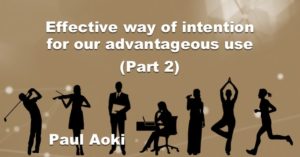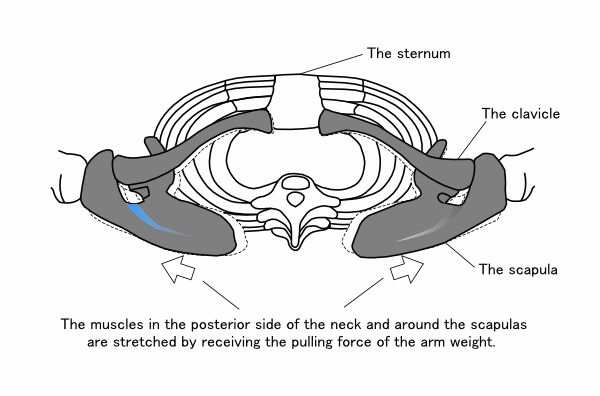The innovative and powerful approach of the AT
I’m glad you visited my blog site. I’m Paul Aoki, a Japanese Alexander Technique teacher. I specialize in teaching advantageous use of posture, movement, breathing, and voice through the Alexander Technique (AT). This is my primary profession, and I teach 5-6 days a week, primarily in Tokyo, Japan.
Through my teaching practice, I have developed a hypothesis that provides a comprehensive theoretical framework for the AT. In other words, I believe I have unraveled the mystery of the AT.
By applying this hypothesis and examining various activities, I have identified certain gaps in the conventional AT practice when it comes to achieving advantageous use.
I have outlined the new theory and skills on this blog site. If you are interested in my approach, I encourage you to consider taking online lessons. I provide personalized advice tailored to your specific needs and offer exercises that facilitate faster learning of improved methods.
What is the AT? – My unique interpretation –
The Alexander Technique focuses on the effective use of our body. Its core component is about “how to support our own body” (postural control) while engaging in various activities. It specially offers an efficient way of supporting own body. As the way we support our body influences all the activities we perform and many functions we have, by applying this technique, our health condition and performance can improve significantly.
Many individuals support their body in their own ways, but often these ways lead to disadvantageous habits and excessive tension. As a result, their health and performance may suffer. The Alexander Technique offers a beneficial approach for a wide range of people to address and improve these issues.
To change our habitual patterns, particularly those related to postural control, we need to cultivate consciousness. The Alexander Technique also provides effective methods for developing awareness, attention, and intention. It guides us in becoming conscious of our being, movement, and performance.
This explanation differs from the usual explanation of the Alexander Technique (AT), but it is more convincing. When we begin by emphasizing the concept of “how to support our own body” in explaining this work, people may find it easier to understand and be less confused. It not only provides a simpler explanation but also one that is realistic and reasonable. This understanding empowers us to improve our use of the body.
My theory and method
There is a theory behind my work.
Though it’s still a hypothesis, it is reasonable. My method of using our body is based on this theory. I am explaining them in the YouTube video series (7 videos).
Other differences from the existing AT
| The existing AT | My approach |
| The head-neck-back relationship is primarily important, and it is recommended to engage this control (the primary control) before undertaking any actions. | The efficient and advantageous postural control is primarily important, and it is recommended to engage this control (the basic postural control) before undertaking any actions. |
| Being aware of interfering habitual behaviors. By inhibiting these interfering habitual behaviors, the entire system can be appropriately organized, enabling improved movement and performance. (Passive achieving with the ideas like: Inhibition / Non-doing / The right thing does itself.) | Being aware of habitual disadvantageous behaviors. And, simply change them to more advantageous ones. Need to learn what are disadvantageous and advantageous. (Active achieving) |
| Since sensory appreciation is faulty, it should not be relied upon. (Faulty sensory appreciation) | While vague sensory appreciation is faulty, objective sensory appreciation can be relied upon. |
| It is not advisable to solely focus on achieving a result(goal, end); instead, it is important to focus on the process leading to the result. (‘End-gain’ is not recommended, and ‘Means whereby’ is recommended.) *There is a risk of interpreting this as “not trying to achieve the results.” | It’s important to pay attention to the process. However, the process itself is also one of the goals to achieve. By focusing on achieving a single objective, one may not be able to change its process. It’s recommended to intend to achieve for multiple objectives(ends), including both the desired outcome and its process. (‘Multi-ends gain” is recommended.) |
| There are some particular directions. There is no rule or principle in them. | There is a principle for how to intend the actions in order to practice the action with minimum muscle contraction. (Original objective intention) |
| There is no common consensus. It is not being given importance. | Abs. free (Releasing excess muscle contraction in the abdominal muscles) |
| There is no common consensus. It is not being given importance. | Pelvis stand adjustment |
| It is difficult, because we are not supposed to evaluate our sensory appreciation. | Having objective standards for state evaluation (Feed back control) |
What are the effective ways of intention?
When we want to change our use (avoid habits), we need to be conscious of them. There are the effective ways of intention for avoiding excess muscle contraction.


What are the advantageous ways of using the body?
There are disadvantageous ways and advantageous ways in our use.



